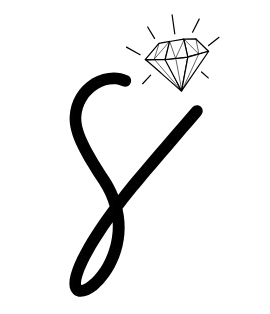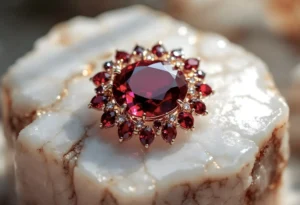Ever looked at a sparkling gem in a jewellery shop and thought, “How do experts know this is real?” That’s the very question I had when I inherited an old sapphire ring from my grandmother. It shimmered beautifully, but I couldn’t tell whether it was genuine or just a well-crafted imitation. This curiosity led me down a rabbit hole into the world of gemology, and I even had the chance to shadow a certified gemologist at a lab in London. What I learned was nothing short of fascinating.
Gemologists don’t just glance at a stone and say, “That’s a ruby.” They use a combination of science, experience, and specialised tools to assess everything from authenticity to quality. In a world flooded with synthetics, simulants, and treatments, their expertise ensures that buyers aren’t just paying for a sparkle—but for the truth.
The Foundation: What Exactly Does a Gemologist Do?
Gemologists are trained professionals who study, analyse, and identify gemstones. But more than that, they uncover stories. Each gemstone carries a geological history, chemical identity, and visual fingerprint.
Their work typically involves:
- Identifying whether a stone is natural, synthetic, or treated
- Grading the gemstone based on the 4 Cs (Colour, Clarity, Cut, Carat)
- Detecting treatments like heat or irradiation
- Determining country of origin, where possible
Gemologists often work in labs, auction houses, jewellery stores, or as independent consultants. The tools and methods they use are meticulous—and trust me, there’s much more than meets the eye.
Tools of the Trade: The Gemologist’s Toolkit
One of the most eye-opening moments during my lab visit was seeing how many tools are involved in analysing just one stone. Here are the essentials:
1. Loupe (10x Magnification)
This is the classic handheld magnifier you often see jewellers use. It allows for a closer look at inclusions (internal features) and blemishes (external flaws). A loupe can also help spot signs of synthetic growth patterns or treatments.
“I always start with the loupe,” shared Alan Ramsey, FGA-certified gemologist. “It’s like meeting someone face-to-face for the first time—you get an immediate first impression.”
2. Microscope
For a more detailed look, gemologists turn to a gemological microscope. These are high-magnification tools (10x to 60x) that reveal the internal structure of a stone. Inclusions, for example, can indicate whether a gem formed naturally or synthetically.
3. Refractometer
This tool measures the refractive index of a gemstone—how much it bends light. Every gem has a specific range, making this one of the most reliable methods for identification.
4. Polariscope & Dichroscope
- Polariscope: Reveals optical properties like whether the stone is singly or doubly refractive.
- Dichroscope: Helps determine pleochroism—the appearance of different colours when viewed from different angles.
These tools are especially handy when differentiating similar-looking stones.
5. Spectroscope
Used to analyse the absorption spectrum of a gemstone, this helps identify its type and detect treatments or synthetic origins.
The Process: How a Gemologist Examines a Gemstone Step-by-Step
Let’s break down what typically happens when a gemologist examines a new stone:
1. Visual Inspection
Initial observations are made using the naked eye and loupe. The gem’s colour, transparency, and general characteristics are noted.
2. Measurement & Weight
The gem is weighed using a carat scale and measured with digital callipers. These dimensions are essential for grading and pricing.
3. Optical Testing
The refractive index is checked, and optical properties are studied using the polariscope and dichroscope. This narrows down the identity.
4. Microscopic Examination
The internal structure is studied to spot inclusions, which provide clues about origin and authenticity.
“Natural stones often have fingerprints, clouds, or crystals inside,” noted Dr. Helena March, a GIA instructor. “Synthetics may have curved striae or gas bubbles.”
5. UV Light Testing
Under ultraviolet light, gemstones react differently. Diamonds, for example, often fluoresce blue under UV.
6. Advanced Testing (When Needed)
If further analysis is required, advanced tools like Raman spectrometers or infrared spectroscopy may be employed.
Differentiating Between Natural, Synthetic, and Treated Gems
This part of gemology requires keen observation and a deep understanding of how different gems are formed.
- Natural gems: Formed through geological processes without human interference.
- Synthetic gems: Man-made but chemically identical to natural gems.
- Treated gems: Natural or synthetic gems altered to enhance appearance.
For instance, heat-treated sapphires may show colour zoning and altered inclusions, whereas synthetic sapphires might have gas bubbles or curved growth lines.
I saw two sapphires side-by-side. To the untrained eye, they were identical. Under the microscope, however, one had feather-like inclusions and the other had curved striae—a clear sign it was synthetic.
Why It Matters: The Real-World Impact of Accurate Gem Identification
Misidentification can lead to major financial losses or fraud. In high-stakes settings like auctions or investments, even minor inaccuracies can affect value dramatically.
Also, buyers want to know what they’re paying for. A treated ruby may look just as good as an untreated one—but the latter can be 10 times more valuable.
According to a report by the Gemological Institute of America (GIA), nearly 35% of coloured stones in consumer markets show signs of treatment, and synthetics are becoming increasingly sophisticated.
This is why professional certification and third-party lab reports (e.g. from GIA or IGI) are so important.
Frequently Asked Questions (FAQ)
Q1. Can I examine a gemstone at home?
You can do basic checks with a loupe and UV light, but definitive identification requires lab equipment and expertise.
Q2. What is the most reliable test?
Refractive index measurement is one of the most consistent and reliable methods.
Q3. How do I know if a gemstone has been treated?
Treatments often leave behind clues—discoloured inclusions, surface residues, or heat-induced cracks. Only detailed testing can confirm.
Q4. Are synthetic gems fake?
Not at all. They’re real in terms of composition but not natural in origin. They often cost less.
Q5. Is certification necessary?
Yes. A certified gemological report verifies authenticity, treatments, and quality—offering peace of mind to buyers and sellers alike.
Final Thoughts & Actionable Takeaways
Understanding how gemologists examine gemstones reveals just how much skill and science goes into this field. If you’re a collector, jeweller, or curious buyer, here are a few practical steps you can take:
- Always request certification for high-value gems.
- Learn basic gem ID tools like the loupe and UV light.
- Consult a certified gemologist before making expensive purchases.
- Keep an eye out for common treatments or synthetic indicators.
Whether you’re investing in fine jewellery or simply curious about your birthstone, a little gemological knowledge goes a long way.
Have a gem you’re unsure about? Drop a comment below or share your experience—I’d love to hear your stories or help answer your questions!
Want more such gemstone information? Then why wait? Read more of our articles!




